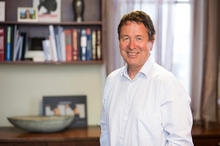Wednesday, Oct 2, 2013

Bringing peace of mind to 50 million people worldwide by 2030 is the ambitious aim of Auckland company MoleMap.
MoleMap’s chief executive Adrian Bowling said it was “a lofty goal” but achievable on the back of the firm’s push into the Australian and North American market.
The chain of skin cancer clinics, which check 22,000 New Zealanders each year for signs of melanoma, already has a presence in both markets.
“We are advancing in Australia and still exploring the US,” Bowling said.
MoleMap hopes the drive into Australia will be boosted by funding from the University of Auckland Business School Entrepreneurs’ Challenge which has up to $1 million in business funding up for grabs.
The company is one of five firms, including Oob Organic and Rose & Thorne lingerie, which have made it into the final of the business competition.
MoleMap was formed in the mid-90s by a group of dermatologists and since then has been honing its cancer detection technology, software and cloud-based telemedicine platform.
Patients see a nurse specialist who collects images of skin from top-to-toe, identifying and photographing problem lesions.
All the data is then sent to a dermatologist for diagnosis.
“We actually look under the surface of the skin and we can see patterns and structures inside those lesions that help the dermatologists decide whether that is melanoma or has the potential to be a melanoma, in which case it should be tracked,” Bowling said.
In New Zealand most of its clients are self-referred whereas more Australians get their skin checked after seeing their GP first, he said.
“In Australia the medical consumer is much more used to engaging with their doctor so we had to bring the doctors on board over there,” Bowling said.
“That’s why it has taken a bit longer in Australia because we’ve had to educate, first of all the dermatologist and then the general practitioner.”
To date funding has come from shareholders or out of cashflow, which has constrained the pace at which the business can grow, Bowling said.
